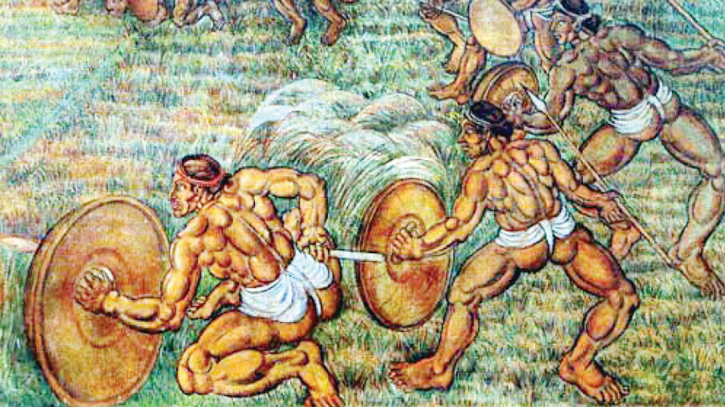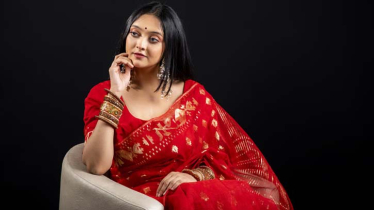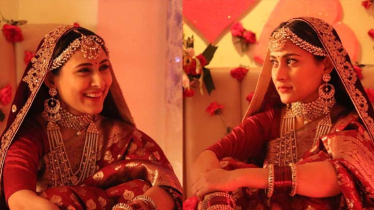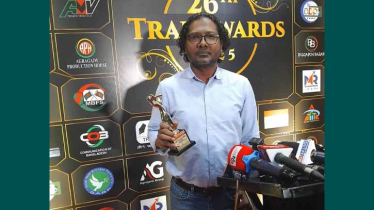
Photo : Collected
With every brushstroke, SM Sultan brought the rural landscape and the essence of nature to life, capturing their beauty with unparalleled vividness.
His paintings celebrated the unsung heroes of our society—the strong and resilient peasants, the hardworking men and women of the countryside—rendered with a muscular grace that elevated their dignity and strength.
Sultan's depictions of village life transcend mere landscapes. While they undoubtedly stir nostalgia and serenity among urban dwellers, evoking memories of a simpler, picturesque rural Bangladesh with its farmlands, canals, thatched huts, and the everyday rhythms of village life, they embody much more. These works are vibrant narratives, vividly illustrating the toil, triumphs, and tribulations of farmers, offering a profound glimpse into their enduring struggles and joys.
SM Sultan who was fondly called as 'Laal Miah' was born on August 10, 1924, in the humble village of Masimdia, nestled by the Chitra River in Narail district.
His father, Sheikh Mohammad Messer Ali, worked as a mason, and young Lal Mia was his apprentice. Little did anyone know that this boy, once a humble mason's assistant, would one day become a master of paint and color, enchanting the world with his artistry.
Sultan arrived in Kolkata as a penniless youth, yet he was fortunate to find a warm and nurturing haven in the home of Professor Shahid Suhrawardy. Aspiring to join the prestigious Calcutta Art College, Sultan excelled in the entrance examination, securing the top position. However, his lack of a matriculation certificate initially disqualified him under the existing regulations. Thanks to the advocacy of Professor Suhrawardy, Sultan was granted special admission.
Despite his impressive academic performance, Sultan's restless spirit yearned for the wider world. Unable to wait for the completion of his final year, he bade farewell to both the college and Kolkata, setting out to explore India with his brush and paint. As he journeyed across the land, he captured portraits and scenic vistas, earning his livelihood through the sale of his art.
Though he may lack formal education, he has been profoundly captivated by the reproductions of modern masters, admiring their work with awe, though the technical and aesthetic revolutions they embody elude him. Sustaining himself with nothing but pencil and brush, he has embraced the precarious path of an artist, knowing no other means of livelihood. Unable to reconcile with the world of commercial art, and too whimsical for the rigors of business, he has led a life marked by periods of poverty interspersed with fleeting moments of prosperity and impulsiveness.
In an interview with Weekly Prahar on May 6, 1987, Sultan highlighted the inspiration behind his depiction of farmers with muscular forms.
"Farmers are the true heroes of our land," he explained. "Can a hero ever be frail? They are the very heart of our existence and thus must be portrayed as strong and robust. They drive the plough into the harsh soil to yield our crops, yet they often endure hunger and poverty. The reality is, our survival hinges upon their labor. Despite their real-life emaciation and deprivation, I choose to represent them as symbols of strength. It is my hope that this portrayal will reflect a vision of prosperity and respect for their vital role," said the iconic artist.
SM Sultan played a pivotal role in bringing Bangladeshi painting to the Western world, particularly Europe and America. During the early 1950s, he embarked on an extensive tour across several cities in the United States, London, and Europe. His artistic journey was marked not merely by travel, but by a significant presence in the international art scene.
His works were displayed alongside the masterpieces of renowned artists such as Picasso, Salvador Dalí, and other luminaries. Additionally, Sultan held numerous solo exhibitions across various American cities and London, further establishing his art's prominence on the global stage.
An intriguing tale accompanies Sultan's inaugural exhibition in Bangladesh (then East Pakistan), which took place on September 20, 1969, at the Khulna Club. The event was an overwhelming success, with most of his paintings being sold on the very first day.
Around the same time, Prince Karim Aga Khan and his newlywed wife, Princess Selima, were visiting Khulna. They graciously came to our home for tea. Knowing their deep appreciation for art and with Sultan still present, I arranged for them to view some of his works. The Princess was captivated and selected two of Sultan's grand oil paintings. Her secretary subsequently presented Sultan with two cheques, each for five lakh Taka.
Yet, Sultan, ever generous and devoted to nature and humanity, chose to give away his earnings for the benefit of others. He seldom kept a record of his artwork, often parting with it freely.
When asked about his preference for depicting women with a softer touch compared to men in his drawings, the artist shared with Weekly Prahar that women's roles, imbued with love and compassion, deeply inspire him.
"Men may struggle in their labor, but it is the women who work behind the scenes, transforming this struggle into success with their nurturing touch. Women, through their love, shape life into something sweet and bountiful. While men toil to harvest the land, women cultivate their homes and nurture their children. Each plays a distinct role, yet both contribute equally to the tapestry of life. In their separate spheres, they carry out their duties with grace and dignity, making life more beautiful. This essence of their contributions is what I sought to capture in my paintings," he explained.
Messenger/Fameema








